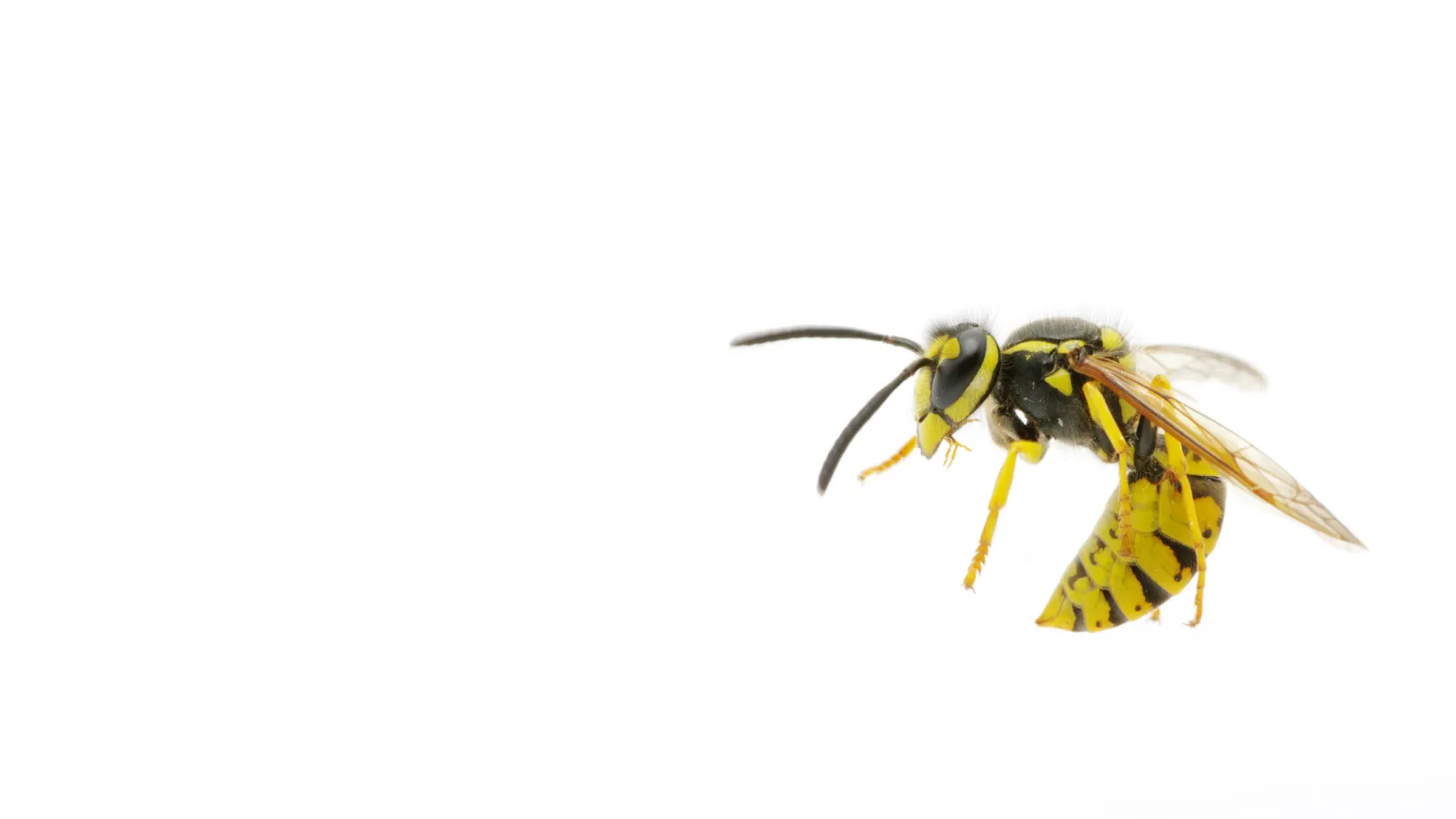
Yellow Jackets
Latin Name: Vespula spp. and Dolichovespula spp.
Yellow jacket wasps are common in the late summer and early fall when they are most active and aggressive. This time of year coincides with the peak of their colony growth, as the worker wasps become more focused on finding food to sustain the colony as it prepares for winter. Yellow jackets are attracted to sweet foods, sugary drinks, and protein-rich substances, often buzzing around outdoor gatherings, trash cans, and food sources. They do this because their usual protein sources, such as other insects, become less available, and they start seeking out carbohydrates to sustain their energy levels. Fermented drinks, like beer, wine, and cider, become particularly appealing to yellow jackets during this time. These drinks contain sugars and alcohol, which can have an intoxicating effect on the wasps. When yellow jackets consume fermented beverages, they can become "tipsy" or disoriented, making them more unpredictable and aggressive, posing a greater risk to people and pets.
Yellow jackets are highly aggressive, and their stings can be very painful, making them a serious threat to people and pets. If they feel threatened, they are more likely to sting multiple times, so it's important to avoid swatting at them, as this can provoke them and increase the chances of being stung. Since they are highly defensive, sudden movements can trigger an attack. The best approach is to stay calm and slowly move away to avoid escalating the situation.
Yellow jackets typically build their nests in sheltered, hidden locations. Unlike other wasps that build visible nests in trees or under eaves, yellow jackets often prefer to nest in the ground or within wall voids, making their colonies difficult to detect. These nests can grow quite large over the summer as the colony expands, sometimes housing thousands of wasps by the end of the season. While yellow jacket nests die off in the winter in colder climates, the queen will overwinter in a protected location and start a new colony in the spring. In warmer climates, some nests may survive through the winter, allowing the colony to continue growing into the next season.
Understanding where yellow jackets live and how they build their nests is crucial for safely managing or avoiding encounters with them. If you suspect a yellow jacket nest near your home or business, it's best to contact the professionals at Palmetto to handle the situation safely.
Similar Pests: Carpenter Bees, Wasps, Great Black Wasp